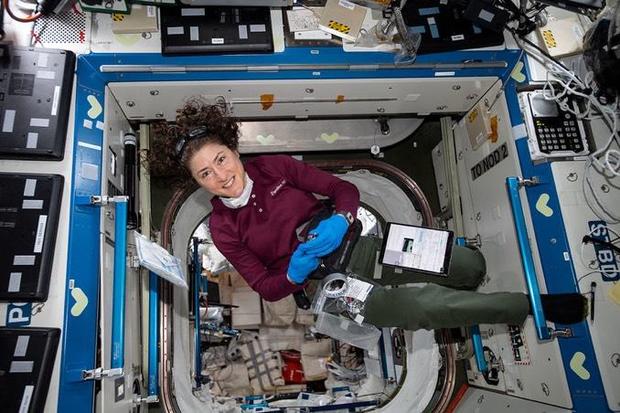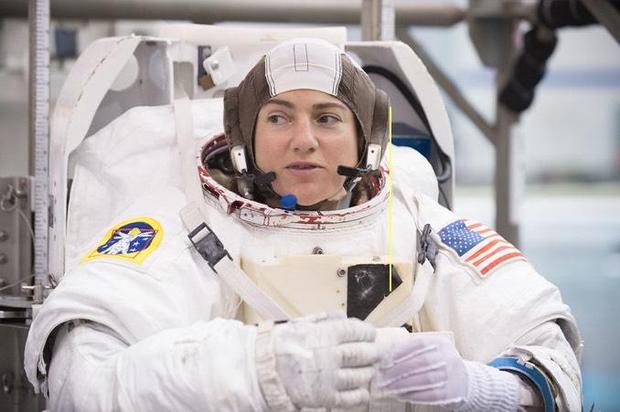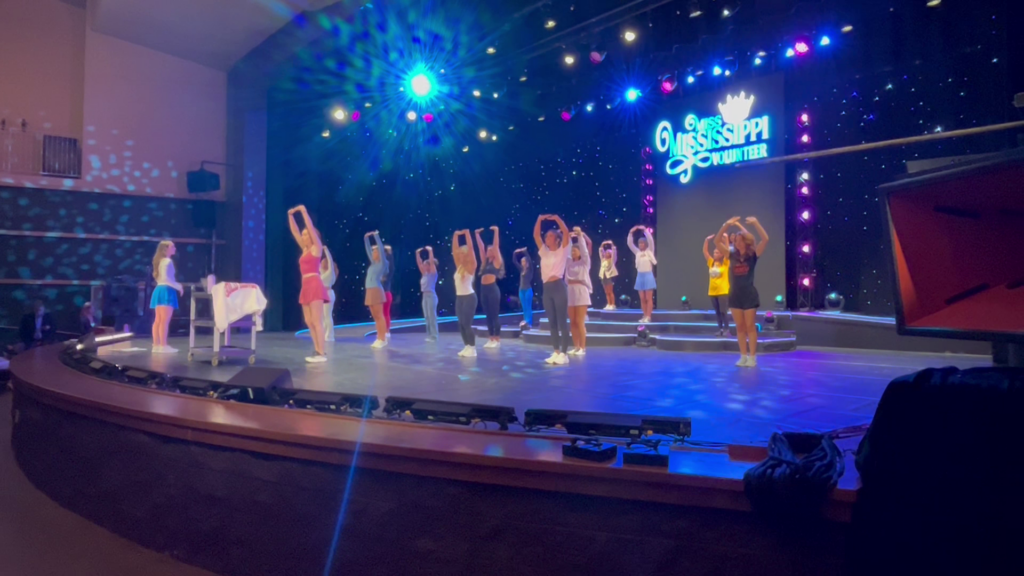First all-female spacewalk on tap this week
Two NASA astronauts will take part in the first all-female spacewalk later this week, the space agency announced Tuesday.
Astronauts Christina Koch, making her fourth spacewalk, and Jessica Meir, making her first, will float outside Thursday or Friday to remove a malfunctioning battery charge-discharge unit, or BCDU, on the far left end of the station’s power truss and to install a replacement, one of three available spares. It is not yet known if any additional tasks will be added.
Trouble with the unit, which controls how newly installed solar array batteries on the space station are charged and discharged, forced NASA to delay three upcoming battery installation spacewalks, including a planned outing Wednesday by Meir and astronaut Drew Morgan, until engineers can figure out what went wrong.
Koch and Meir already were assigned to one of the three remaining battery swap-out spacewalks and both are trained for the sort of generic spacewalk, or EVA (for extravehicular activity), expected later this week.
It will be the first EVA by two women in the 54 years since the late Soviet cosmonaut Alexey Leonov carried out history’s first spacewalk in 1965. Cosmonaut Svetlana Savitskaya became the first woman to walk in space during an outing with a male cosmonaut in 1984. NASA astronaut Kathryn Sullivan followed suit later that year, joining astronaut David Leestma for a shuttle spacewalk.
Koch became the 14th woman to walk in space earlier this year and Meir will be the 15th. Other than Savitskaya, all are current or retired NASA astronauts.
“Women (at NASA) are part of the team, I see women at every level of leadership, in technical areas as well as management,” Megan McArthur a veteran astronaut who now serves as deputy chief of NASA’s astronaut office, said earlier this month. “It’s not something that, fortunately, we have to stop and think about very often.”
When Meir and Koch were assigned as a team to the fourth battery swap-out EVA, McArthur said “I do think in this case it is something to look back and reflect on.”
“It is a milestone, and it remarks on the fact that we have so many women engaged in the space program now,” she said. “It is something that’s wonderful to see. But, again, we are so well integrated as a part of the team that it’s not something we struggle with or have to think about on a regular basis.”
Along with her spacewalk experience, Koch is in the process of logging the longest single flight by a female of any nationality. When she returns to Earth next February, she will have spent 328 days in space, just 12 days shy of the U.S. record set by astronaut Scott Kelly.

Christina Koch aboard the International Space Station. NASA
NASA originally planned for Koch and astronaut Anne McClain to carry out the first all-female spacewalk last March to help install a different set of solar array batteries. But the sizing of the station’s available spacesuits became an issue.
Only one of the four available suits aboard the station at that time was configured with a medium-size upper torso section. Suits can be re-sized in orbit, but changing the fit of an upper torso requires repositioning coolant lines and other components and then retesting the systems, a process that takes about 12 hours.
McClain wore the medium suit during an initial spacewalk with astronaut Nick Hague and initially planned to wear a larger suit for the second spacewalk while Koch. But McClain decided after the first outing that she preferred the medium. Given the time needed to re-size another suit, she opted to delay her second outing until the medium suit was again available. As a result, Hague took her place in what would have been the all-female EVA.
Assignments for the current battery swap-out EVAs were announced earlier this month, with Koch and Meir taking the fourth of five planned outings. Both women were expected to participate in three EVAs each. It is not yet known when the remaining three battery installation spacewalks will be carried out.
Work to replace the space station’s solar array batteries started with an initial set of spacewalks in 2017.
The station is equipped with eight huge solar array wings arranged in pairs, four on each end of the power truss. Each pair of wings is equipped with an integrated electronics assembly, or IEA, that originally were loaded with 12 nickel-hydrogen batteries each to provide electricity when the lab complex flies through Earth’s shadow.
To keep the station operating at peak efficiency through the 2020s, NASA is in the process of replacing all 48 of the original batteries with 24 of the more powerful lithium-ion models, along with circuit-completing “adapter plates” that take the place of batteries that were removed but not replaced.

Jessica Meir during spacewalk training at the Johnson Space Center in Houston. NASA
Each solar wing and IEA services two of the station’s eight electrical channels and each channel features three components known as battery charge-discharge units, or BCDUs, that control recharging when the station is in sunlight.
Located in the IEA adjacent to the batteries they control, the BCDUs also deliver stored power when the lab is in Earth’s shadow, discharging the batteries in the process. Each BCDU controls the charging/discharging of two nickel-hydrogen batteries or one lithium-ion battery/adapter plate.
One set of six lithium-ion batteries and adapter plates was installed in 2017 and a second set last March, taking care of the space station’s right and left inboard arrays respectively. The third set of six is being installed on the far left side of the truss, a segment known as port 6 or P6 for short. A final set will be installed for the far right-side arrays — S6 — next year.
“It’s an ongoing maintenance operation, it’s one we put in place several years ago with the purchase of the lithium-ion batteries, stepping up the technology,” Kenny Todd, a senior station manager, said before the earlier spacewalks.
“Just like your rechargeable batteries at home, eventually over time they’re not going to recharge as well, they’re not going to hold as much charge. Over the life of station, we knew this was going to happen, we knew the batteries were going to have to be replaced.”
During spacewalks October 6 and 11, Koch and Morgan removed six nickel-hydrogen batteries from power channel 2B in the P6 integrated electronics assembly and replaced them with three lithium-ion batteries and three adapter plates. Batteries and adapters for power channel 4B were to be installed during three additional spacewalks October 16, 21 and 25.
But after the second battery swap spacewalk, flight controllers noticed one of the three BCDUs in the power channel 2B electronics unit had malfunctioned. There was no immediate impact — channel 2B continues to provide full power — but a subsequent failure could trigger at least some equipment shutdowns.
A similar failure occurred earlier this year after new batteries were installed in the inboard port 4 IEA. In that case, the station’s robot arm was used install a replacement. The failure was considered a random incident at the time, but now that a second BCDU has failed in a similar manner, NASA managers want to make sure they fully understand the issue before proceeding with additional battery installations.





Leave a Reply